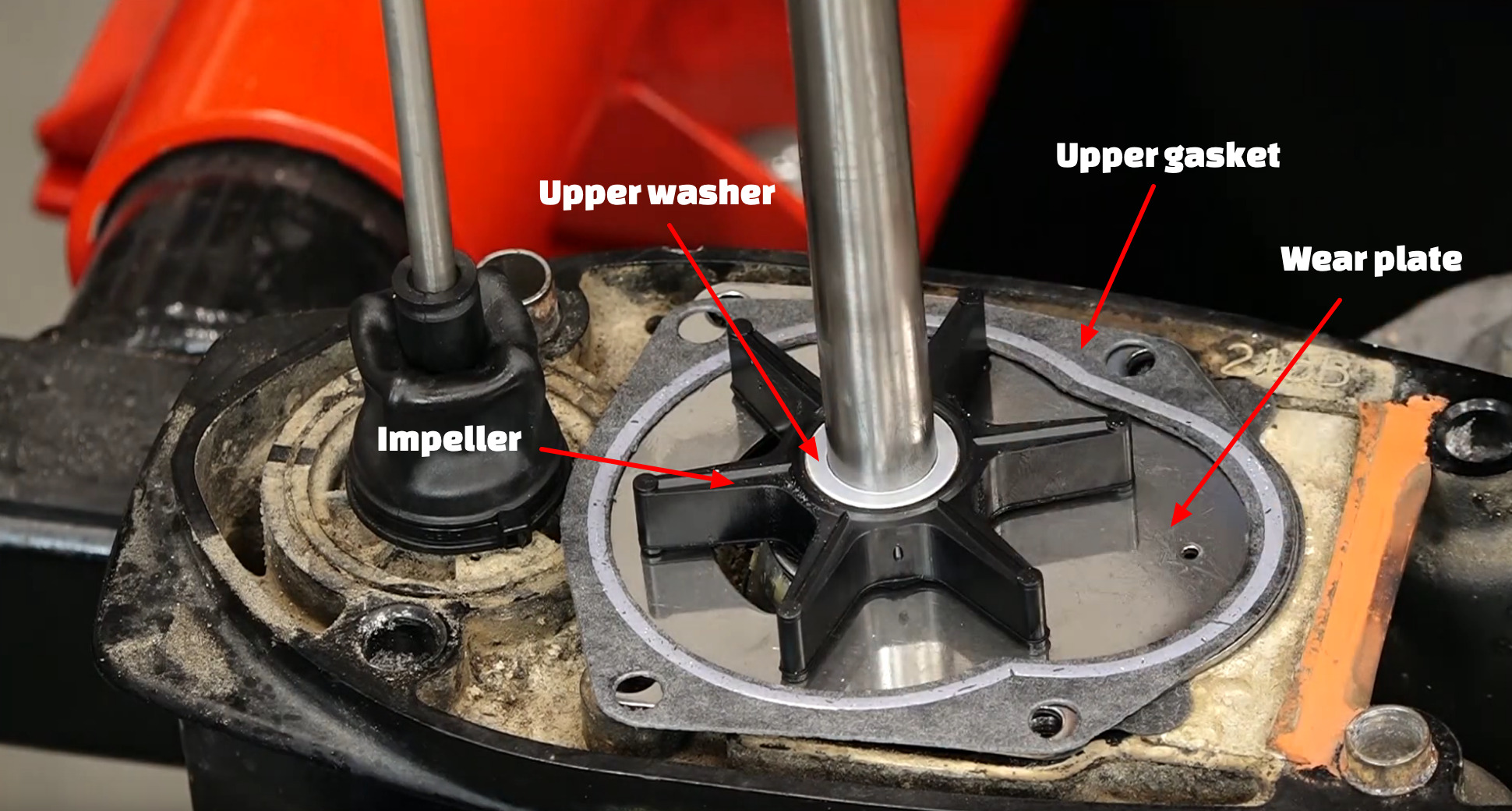Yamaha Outboard Impeller Replacement Guide
So, your Yamaha outboard's overheating? Before you panic and call a pricey mechanic, maybe it's just a worn impeller. These little rubber wonders are crucial for cooling your engine, and changing one is usually way easier than you think. This guide will walk you through changing a Yamaha outboard impeller, saving you some serious cash and maybe even some embarrassment.
An impeller is a small, rubber component within the lower unit of your outboard. It spins, drawing cooling water up through the intake and circulating it around the engine block. Without a functioning impeller, your outboard will overheat, leading to potentially catastrophic damage. Over time, impeller blades can wear down, crack, or become brittle due to exposure to heat, chemicals, and general wear and tear. Regularly changing your impeller is a simple preventative measure that can avoid major headaches (and repair bills) down the road.
The history of the outboard impeller is intertwined with the development of the outboard motor itself. As engines became more powerful and compact, efficient cooling systems became essential. The impeller, a compact and reliable solution, became the standard for cooling. Nowadays, replacing an impeller is a standard maintenance procedure for every outboard owner. Neglecting this essential maintenance can lead to significant problems, including a seized engine, which is about as bad as it gets.
Knowing when to replace your impeller is key. Typical signs of a failing impeller include overheating, weak telltale stream, or steam coming from the engine. Some boaters choose to replace their impellers annually or every other year as preventative maintenance, especially before the start of the boating season. This proactive approach ensures optimal cooling performance and prevents unexpected breakdowns on the water.
Changing an impeller isn't rocket science, but it does require some basic mechanical skills and the right tools. You'll need a new impeller kit specific to your Yamaha outboard model (crucial!), a set of screwdrivers, pliers, and maybe some lubricant. Before starting, make sure you have a clean, well-lit workspace and a container to catch any spilled fluids.
Replacing a Yamaha outboard impeller offers several benefits. First, it prevents overheating, thus prolonging the life of your engine. A new impeller ensures efficient cooling, keeping your engine at its optimal operating temperature. Second, it improves fuel efficiency. A properly cooled engine runs more smoothly and efficiently, reducing fuel consumption. Third, regular impeller changes save you money in the long run by preventing costly repairs associated with overheating damage. For instance, replacing an impeller yourself can save hundreds of dollars compared to having a mechanic do it.
Here's a basic step-by-step guide for replacing your Yamaha outboard impeller. First, disconnect the fuel line and remove the lower unit. Then, locate the impeller housing and carefully remove the old impeller. Inspect the housing for any debris or damage. Install the new impeller, making sure it's seated correctly. Reassemble the lower unit and reconnect the fuel line. Finally, run the engine and check the telltale stream to verify proper operation.
Advantages and Disadvantages of DIY Impeller Replacement
| Advantages | Disadvantages |
|---|---|
| Cost savings | Potential for mistakes |
| Increased knowledge of your engine | Time investment |
| Convenience | Need for tools |
Best Practices:
1. Use a genuine Yamaha impeller kit.
2. Lubricate the impeller with glycerin or soapy water for easy installation.
3. Inspect the impeller housing for damage.
4. Double-check all connections before starting the engine.
5. Note the orientation of the old impeller before removal.
FAQs:
1. How often should I replace my impeller? Generally, every 1-2 years or as needed.
2. What are signs of a bad impeller? Overheating, weak telltale stream, or steam.
3. Can I use any impeller? No, use a Yamaha impeller specific to your model.
4. What tools do I need? Screwdrivers, pliers, and possibly a lubricant.
5. Is it difficult to replace an impeller? Not particularly, but it requires some mechanical aptitude.
6. What happens if I don't replace my impeller? Your engine could overheat and seize.
7. Where can I buy a Yamaha impeller kit? From a Yamaha dealer or online retailers.
8. How do I know if my new impeller is working? Check the telltale stream for a strong flow.
Tips and Tricks: Take photos during disassembly to help with reassembly. Use a marker to indicate the impeller's orientation before removal.
Replacing your Yamaha outboard's impeller is a crucial maintenance task that every boat owner should be familiar with. It's a relatively straightforward procedure that can save you a significant amount of money and prevent potentially catastrophic engine damage. By understanding the importance of this task, learning the steps involved, and following best practices, you can keep your Yamaha outboard running smoothly for years to come. Regular maintenance, including impeller changes, is an investment in the longevity and performance of your engine. Don't wait for a cooling system failure to sideline your boating adventures. Take proactive steps today to ensure your engine stays cool and your time on the water is uninterrupted. Learn more about your specific Yamaha outboard model by consulting your owner's manual or visiting the official Yamaha website. Happy boating!
Level up turning 11 epic birthday bash ideas
Usa swimming team unity a wave of success
How to copy paste linkedin profile link your networking shortcut














